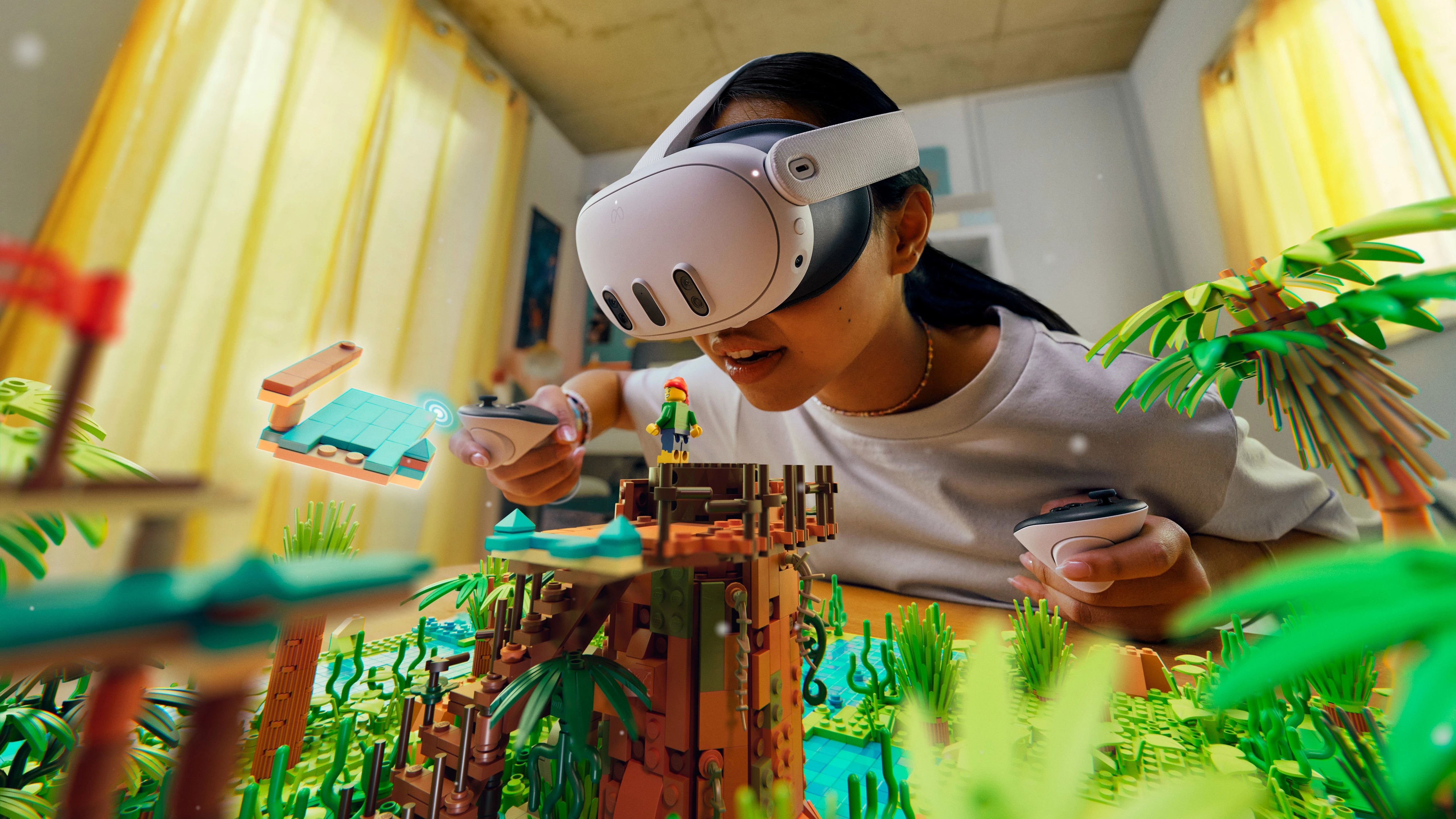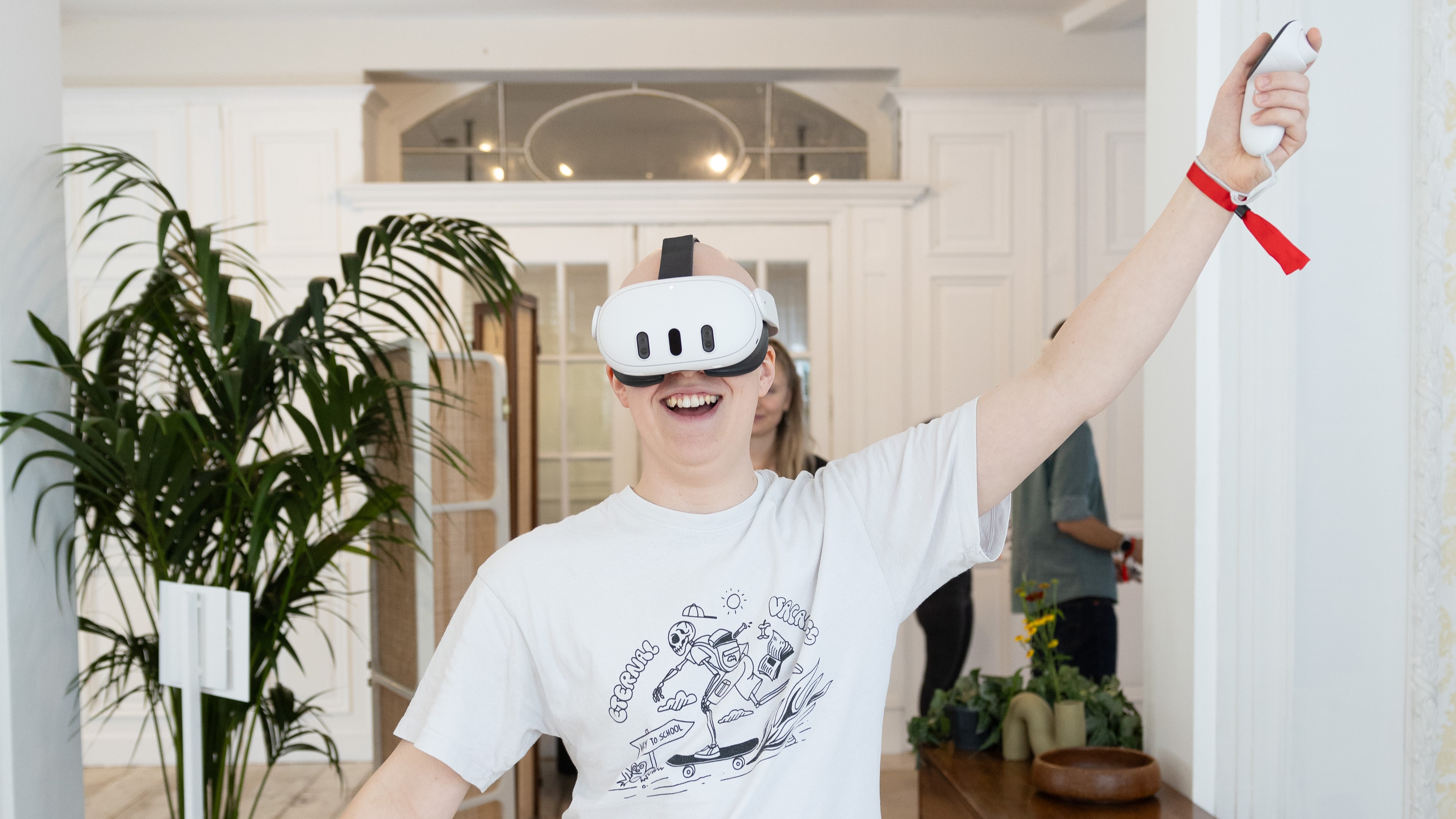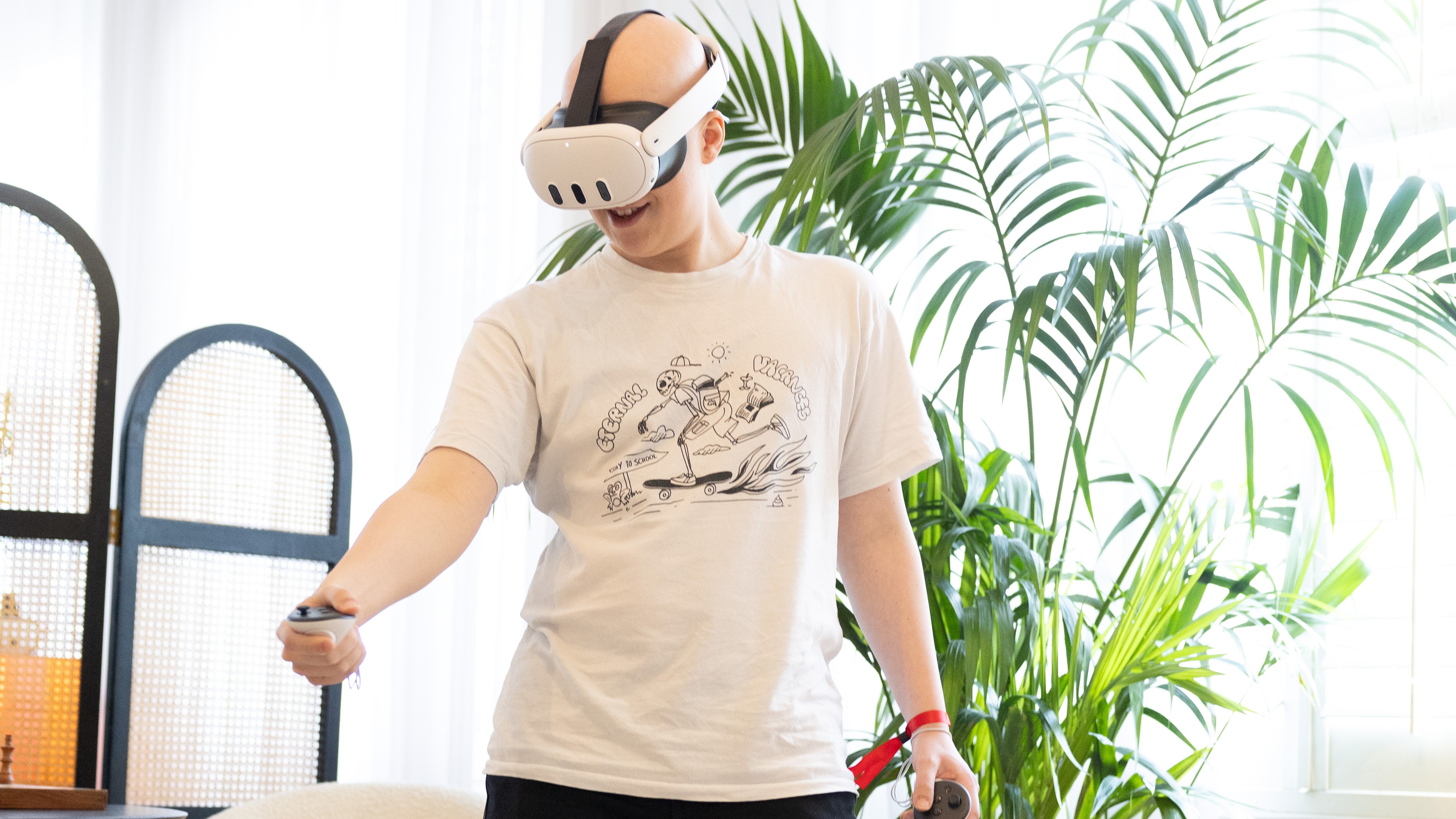The Meta Quest 3 is here, and I think it's the best VR headset yet
Move over Oculus Quest 2, there's a new sheriff in this VR town

Update: You can now check out my full Meta Quest 3 review for TechRadar. I've fallen head over heels in love with the new VR headset, and I think it might just be the best option for almost everyone.
At Meta Connect 2023 we finally got a full look at the new Meta headset the Meta Quest 3 – a headset the company has called its most powerful yet. Best of all it’s available to preorder right now starting at $499.99 / £479.99 / AU$799.99, with the headset set to ship on October 10
While this Oculus Quest 2 successor costs slightly more than Quest 2 did at launch – it was just £299 / $299 / AU$479 for its cheapest 64GB model and was later the same price for a 128GB headset – the Quest 3 comes with a whole host of upgrades to help justify its price.
I've had the chance to try out the Quest 3 at a demo session arranged by Meta, and you can read my first impressions of the new headset in my hands-on Meta Quest 3 review.
The star of the show is the new Snapdragon XR2 Gen 2 chipset, which offers a two-and-a-half times better graphical performance compared to the Quest 2’s XR2 Gen 1 chip. Plus with its now 8GB of RAM this means VR experiences can offer more realistic physics and lighting, as well as fuller environments for you to explore and interact with.
These improved graphics will be shown on a new and improved pair of LCD displays which now boast 2,064 x 2,208 pixels per eye (up from the Quest 2’s 1,920 x 1,832 pixels per eye). Best of all this display has a variable refresh rate that can get as high as 120Hz.

You’ll also find the design has been given a few upgrades. Not only is the headset 40% slimmer which should help to make it more comfortable to wear but it’s easier to adjust the headset to suit your needs. There’s a lens adjustment scroll wheel that you can turn while wearing the headset so you can set the lens to perfect spacing apart and a built-in adjustable spacer that makes room for glasses if you’re wearing a pair.
Get daily insight, inspiration and deals in your inbox
Sign up for breaking news, reviews, opinion, top tech deals, and more.
Lastly, but perhaps most importantly, the Meta Quest 3 is a mixed reality-focused device with new full-color passthrough capabilities and a depth sensor to make it better than Meta’s previous headsets at mapping out your real-world space. Mixed reality has always felt a little gimmicky, but with its improved capabilities and new features like Augments – these sort of mixed reality widgets – the Meta Quest 3 might finally make us care about MR as much as VR.
As I mentioned above, preorders are live now with the new Meta headset set to ship on October 10, 2023. You can pick up the base 128GB version for $499.99 / £479.99 (Australian pricing to be confirmed by Meta), or you can buy the 512GB Quest 3 for $649.99 / £619.99 / AU$1,049.99. You can also pick up a range of accessories including a Quest 3 Elite Strap, and the one I’m most excited about, the charging dock (as the Quest Pro charging station was a massive help).
To help incentivize you to make a preorder, Meta will give anyone who orders a Meta Quest 3 before January 27 a free copy of Asgard’s Wrath 2. If you order the 512GB model you’ll also get a six-month subscription to Meta Quest Plus – a service that gives you new free VR games and apps every month that you can play as long as you’re subscribed.
What I thought of the Meta Quest 3
You can read my hands on Meta Quest 3 review for a more in-depth rundown of my initial Quest 3 reactions, but the TL;DR is this device seems like a major step forward compared to what Meta has produced before and I think it could be the best VR headset out there.

Visually, the Quest 3’s graphics look almost night and day compared to the Oculus Quest 2. The most obvious improvement is for text – it’s actually really easy to read words on documents you find in-game now – but that’s just the tip of the iceberg. Shadows and reflections behave much more realistically, and objects have a crisper look to them that helps the world feel significantly more real than they did on Quest 2.
Mixed reality has received a massive bump up too. Passthrough footage of the real world is more color-accurate and less grainy than with the Meta Quest Pro. It’s still not life-like but it's a leap in the right direction. This higher quality makes mixed reality feel less gimmicky – I loved the mixed reality experiences I tried for Stranger Things VR and First Encounters, and I’ll definitely be trying out more MR content when I get my hands on the Quest 3 again.
The performance also feels solid. While booting up Assassin’s Creed Nexus did take a while, once the game had loaded the Italian city I explored as Ezio felt alive with characters and interactable props without any noticeable stuttering to break my immersion.
As for the design and comfort, again the Quest 3 excels. The headset has an IPD wheel so you can gradually adjust the lens spacing while wearing the headset – saving a lot of hassle compared to the Quest 2, since you no longer have to keep taking the headset on and off to make changes. The slim design also seems to help with comfort. Generally, the Meta Quest 3 feels less bulky compared to the Quest 2, though I wasn’t using it for a super long time and didn’t get a true sense of how easy it would be to wear it for a long stretch of time.

I’ll need to spend longer than a roughly 30-minute demo with the headset to know how impressive the Meta Quest 3 really is, but there is certainly a lot to love about the headset.
Previously I’ve always recommended people buy Meta’s Quest 2 because of the value for money it offers – and it is still a solid value option. But if you can afford to splash out a little more (or are happy to wait longer to save up) the Meta Quest 3 looks like a worthy successor and a VR gadget that more than justifies its higher cost. I can’t wait to try it out again.
You might also like:

Hamish is a Senior Staff Writer for TechRadar and you’ll see his name appearing on articles across nearly every topic on the site from smart home deals to speaker reviews to graphics card news and everything in between. He uses his broad range of knowledge to help explain the latest gadgets and if they’re a must-buy or a fad fueled by hype. Though his specialty is writing about everything going on in the world of virtual reality and augmented reality.